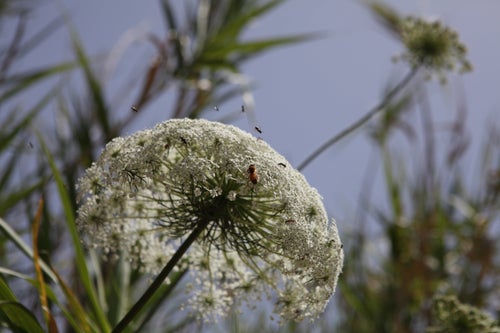

After a long winter, warmer months are coming and as any hay fever sufferer will tell you, pollen season is nearing ever-closer.
As if that wasn’t bad enough, the Met Office has warned that high levels of pollen are expected across England and parts of Wales this weekend in what appears to be a pollen bomb.
Yay.
According to Patient UK: “A pollen bomb occurs when trees and plants release millions of grains of pollen within a short period of time as a result of prolonged dry weather.
“Although pollen bomb isn’t an official phrase used by meteorologists, it is used to describe very high levels of pollen in the atmosphere that can worsen symptoms for hay fever sufferers.”
Deyan Dimitrov believes that for those who do suffer with hay fever, minimising the impact starts at home. Dimitrov is a laundry expert and founder of Laundreyheap and he’s shared his top tips for ‘pollen-proofing’ the home.
Six simple steps to pollen-proof your home
Invest in anti-allergen bedding
Dimitrov warns that hay fever can be impactful to sleep and recommends investing in anti-allergen bedding to tackle it. He said: “The first advantage of anti-allergen bedding is that it works to trap dust and pollen within your bedding so that they can’t be dispersed and worsen symptoms.
“Alternatively, look at buying bedding made of natural materials that repel dust and pollen particles that may disturb your slumber.”
Wash your bedding more frequently
Ideally, bedding should be washed every 1-2 weeks. However, if you have hay fever, Dimitrov recommends washing it every week. He said that this will prevent pollen and dust that may be trapped in the bedding from building up and triggering hay fever symptoms.
He added: “I suggest washing your bedding at 60 degrees and waiting until it is completely dry before storing or putting it back on your bed.”
If you can, dry your laundry indoors
Dimitrov admits that he ordinarily would recommend drying laundry outside whenever possible but for those with hay fever during peak seasons, it’s better to dry it indoors.
He said: “It is very easy for pollen to stick to your laundry, which can then lead to irritation when you use those items. . To avoid this, dry your laundry either using a tumble dryer or by hanging it over a drying rack indoors.”
However, if you do need to dry it outside, he recommends hanging it in the middle of the day away from trees and grass, and making sure to bring the laundry back in before dusk.
He also added: “Give your washing line a good wipe before hanging new clothes on it.”
Keep doors and windows closed
While you may feel tempted to open your windows and doors during warmer days, this can enable pollen to come into the home. Dimitrov said: “If you want to open your windows, remember that the pollen count is always highest first thing in the morning and as the temperature begins to drop at night.
“In addition to this, remember that pollen showers are unpredictable and can happen at any time.”
Keep pets out of your bedroom
This is a tough one for pet lovers but dogs and cats carry pollen in their fur from being outside and rolling in grass. Dimitrov warns that if you do allow your pet into your bedroom and specifically onto your bed, there is a high risk that they will transfer pollen onto your bedding.
Shower and remove outside clothes before entering the bedroom
Dimitrov said: “It’s important to rid your skin, clothes and hair of any pollen residue before getting into bed at night. The easiest way to remove this pollen is by thoroughly washing your hair and body in the shower.”
He added that if your hay fever causes you to have blocked sinuses and difficulty breathing, the steam from the shower will help to clear mucus and unblock your sinuses for a better night’s sleep.
We can get through this pollen season!